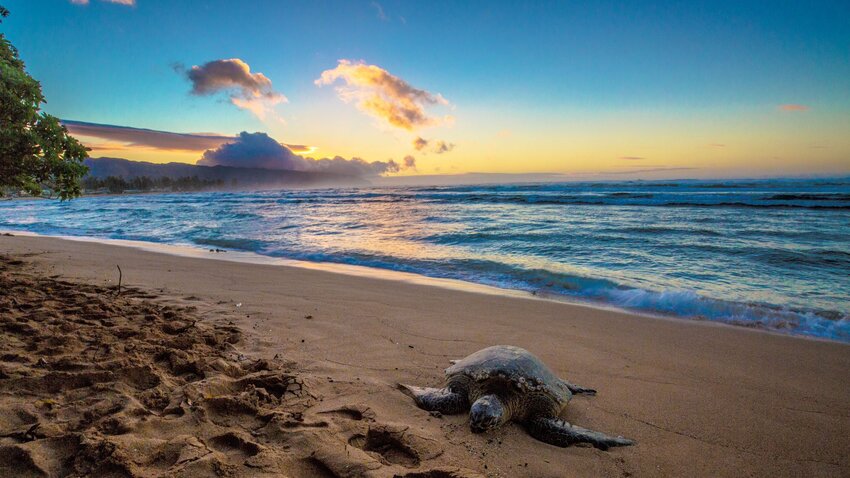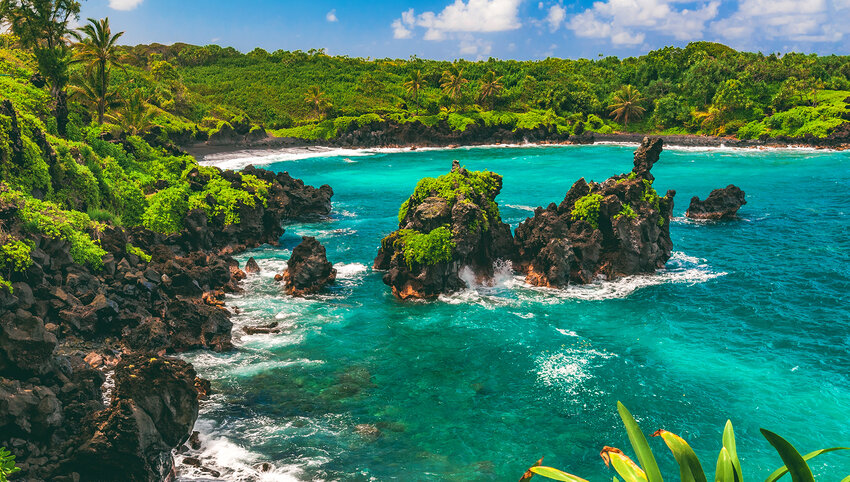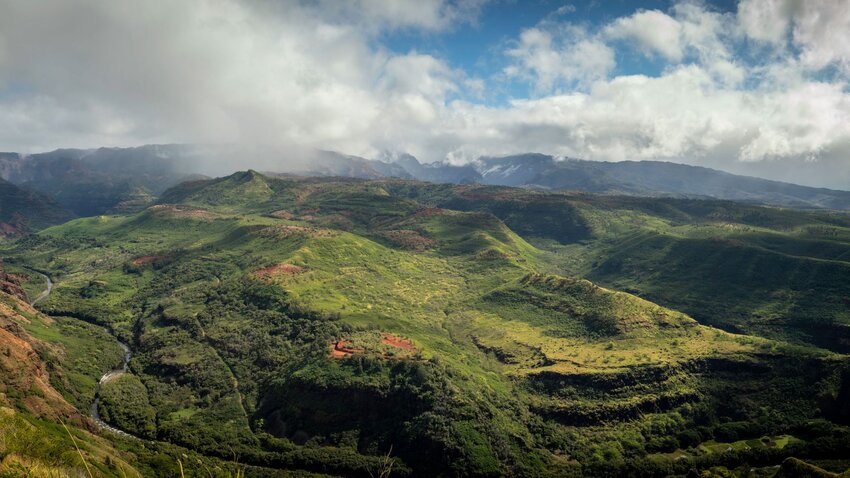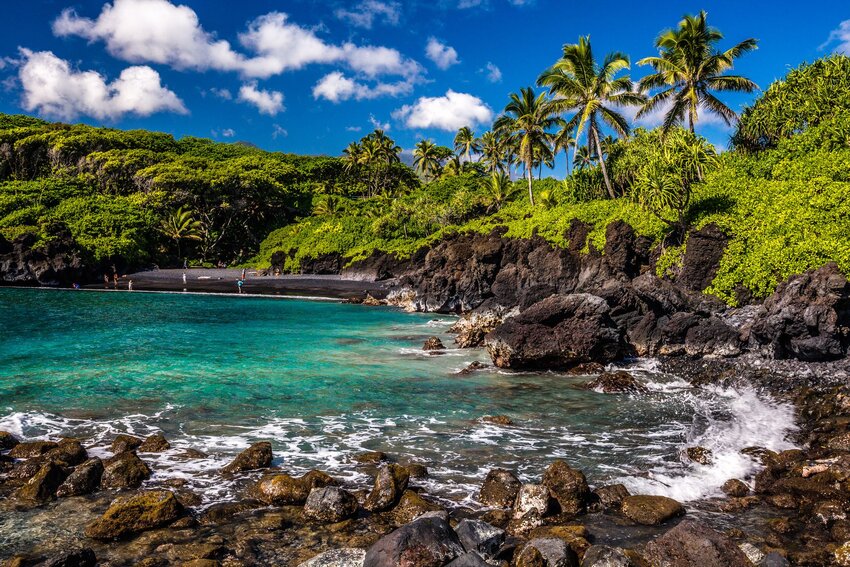Enjoying animals in their natural surroundings is its own type of travel. These experiences aren’t just about consuming the most a country, city, or state has to offer. Getting close to wildlife is an appreciation of the natural world and recognizing the impacts we have on it when we travel.
In Hawaii, you don’t have to go far to see how visitors touch animal habitats. Jewel-toned chameleons dart under your feet as you carry your surfboard and beach gear back to your tropical residence. Birds flit over your table as you sip lychee-flavored cocktails, and fish as colorful as their coral dwellings come close enough to touch as you sail above the reefs. But if you want more than the average animal experiences in Hawaii, here’s how to go further and deeper into the lives of the stunning creatures that call this place home.

Watch the Whales
Humpback whales, much like humans, migrate towards the warmth of Hawaii when the cold sets in. For many of the winter months (as early as October to as late as May), these enormous creatures travel more than 3,000 miles — a journey that can take up to six weeks — from Alaska to the Hawaiian islands. In the warm currents around the chain of islands, humpback whales mate, give birth, and nurture their young before returning to Alaska’s summer waters.
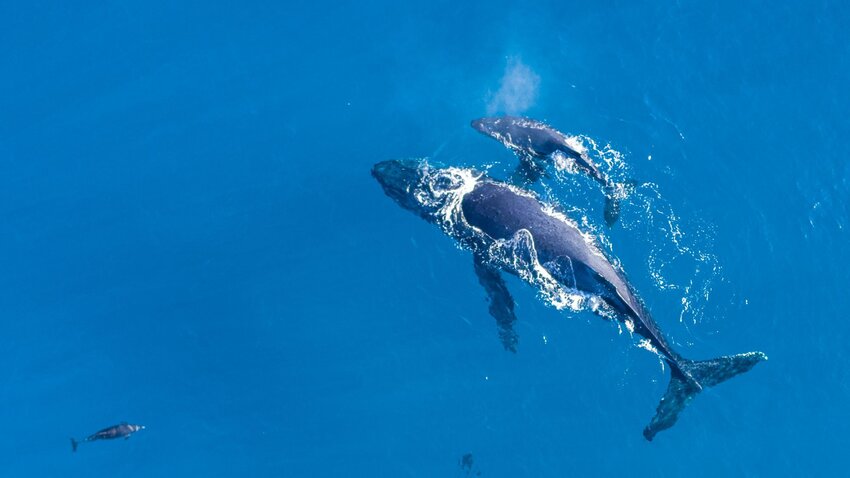
Travelers on any Hawaiian island during the winter months may see whales surfacing from their beach towels or even from their lanais. But the shallow channel between Maui and Molokai, and the stretch between Ma’alaea and Lahaina of Highway 30, are two of the most common places to watch newborn calves learn motor skills and to see adults splash and spout. To get even closer, whale watches take whale enthusiasts into the open water for a more intimate brush with these remarkable giants.
Dive With Dolphins
Cutting through the ocean like so many sleek, shining knives, dolphins are frequently seen returning to their resting places in the shallower waters near the Hawaiian islands. For generations, Hawaiian dolphins live in pods that feed in the deeper, colder waters at night and return to the warmer surface to sleep during the day. These creatures are more than just wildly interesting and fun to watch, they’re culturally and historically significant.
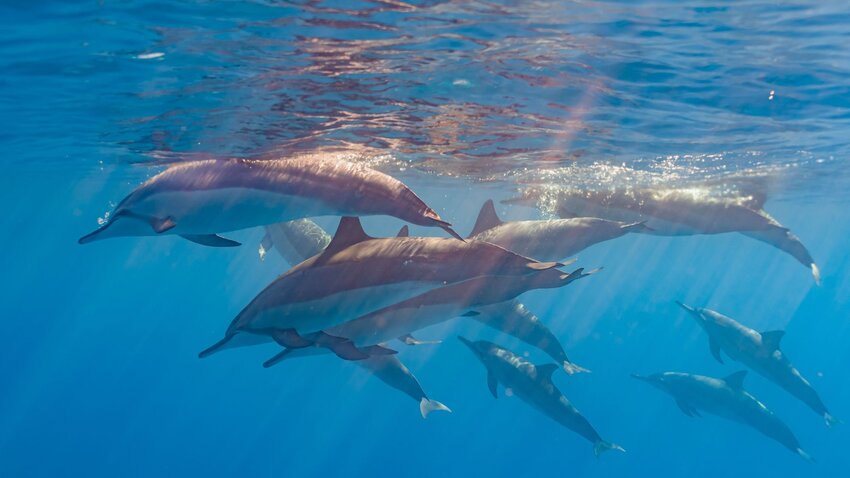
While captive dolphins are visible at the Sea Life Park in Oahu, visiting them in their ocean home is perhaps the best way to appreciate these animals in their natural surroundings. Catamaran and snorkeling tours take you into expanses of ocean frequented by dolphins, and you may just get to swim alongside Hawaii’s state fish, the humuhumunukunukuāpuaʻa. These dolphins spin and play in the surf behind your boat, lap you as you swim, and may even approach curiously as your snorkel over forests of coral.
Take a Turn With Turtles
While you play in the warm ocean waves, you may see a dark shape moving by. If you grab your snorkeling gear and duck under you’ll get a first-row view of one of Hawaii’s many sea turtles flying gently over the sand. The southeast beaches in Maui, the north and south of the Big Island, and Turtle Beach (Laniakea Beach) at the northern tip of Oahu are known for their sea turtle sightings. Dozens of the shelled animals bob in the waves around reefs and rocky outcroppings, or bathe on the warm beaches as they regulate their body temperatures or lay eggs on the soft sand.

Sea turtles are protected by Hawaiian law, so be sure to keep a respectful distance from these large creatures, but this doesn’t mean you can’t admire them from a few yards away. While there are tours specifically designed for turtle viewing, when visitors swim alongside turtles just steps from their beach chairs they may as well be at their own private zoos.
Swim Alongside sharks
Despite sharks’ reputations, anyone who’s swum with them before can attest to the beauty and grace these sea animals possess. They’ll also tell you that swimming with sharks, or simply watching them, is one of the best experiences with nature of their lives. There are over 40 different species of sharks that live off the coasts of Hawaii, many of which are visible in the shark diving experiences offered around Oahu.

For a reverse-zoo feeling, shark-cages lower you just below the water. Between the bars you can watch, take pictures of, and stare in awe at the sharks that pass by. For a more intimate experience, trained instructors take travelers freely into the water. In these free swims, sharks and their researchers demonstrate that these animals are nothing to fear, explaining their incredible adaptations and abilities, and leaving travelers with one of the most memorable (and otherworldly) Hawaiian experience.

